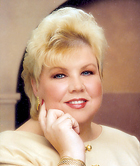
We do a “recorded” nurse report at the end of each shift. Some nurses are not very good at recording this information and I feel like I may be missing a lot by their lack of reporting. What can you suggest?
Whoever takes the temperature, weight and blood pressure, and empties the catheter is responsible for putting the information on the flow sheet. This same flow sheet can be reduced in size and used as a report page for your staff. Staff would then record all of their pertinent information about residents/clients, for transfer to the master sheet at the end of their shift.
You can collect these sheets at the end of the day to use for training purposes. For example, if you collect the forms and find someone is not writing in their temps, you can train them.
Any time you have a new policy or procedure, you need to train them for it.
If you don’t train intensely, you will have 100 people doing it 100 different ways, with no one doing it exactly the way you want.
Don’t assume that they are doing this on purpose. We all get overwhelmed and are sure our staff members are trying to make us crazy, when in truth they just may not understand how you want things done.
Once the forms are completed thoroughly, it will help to collect them to be sure the information is transcribed with no errors. Both sheets need to match. This may sound like a lot to do, but the system works wonderfully when you get the kinks ironed out. Plus, you have written documentation for the nurse in charge to refer to if they need to check out a weight or blood pressure.If you have electronic charting, the computer also can be programmed to alert those staff who have not entered their information, say, within a half hour to the end of the shift.
From the August 01, 2010 Issue of McKnight's Long-Term Care News




